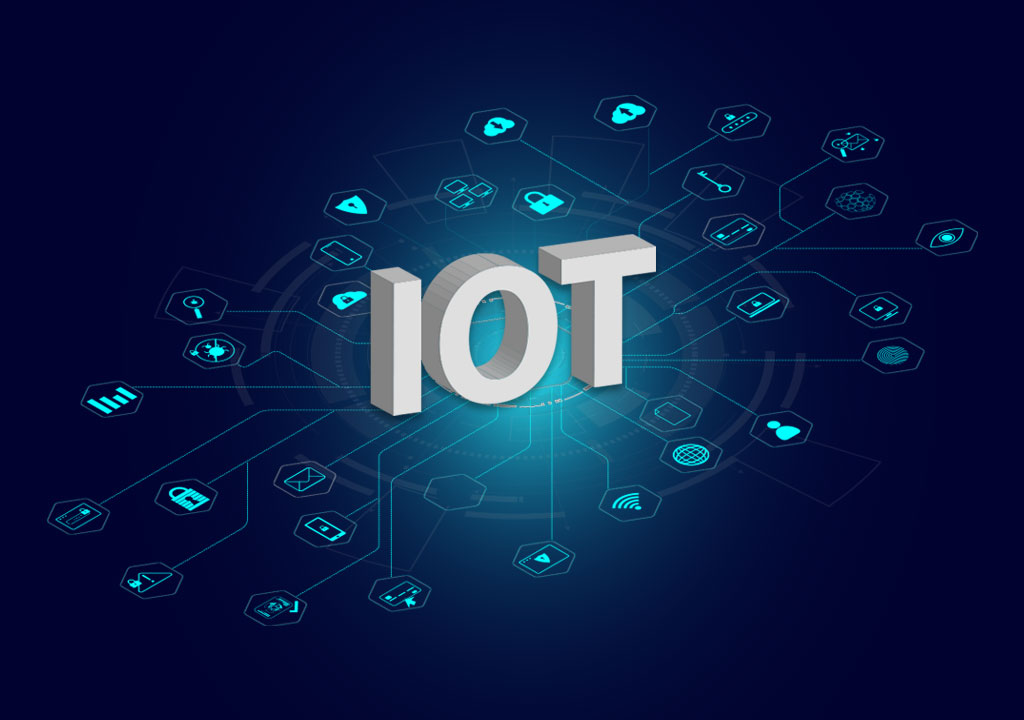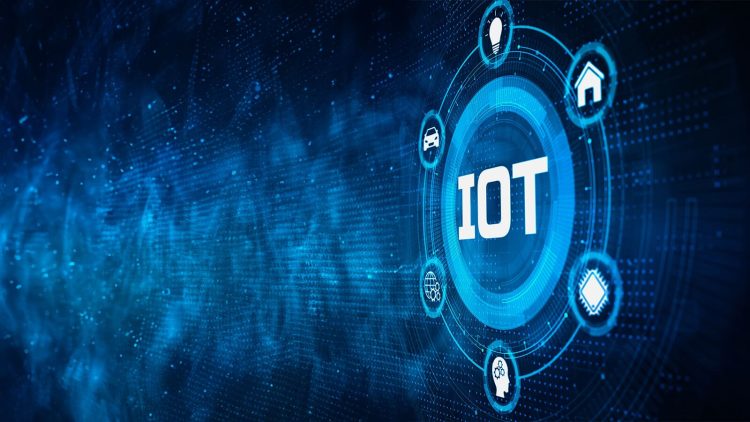Introduction
The Internet of Things (IoT) has revolutionized the way devices communicate and interact with each other. By embedding sensors and software into everyday objects, IoT allows these devices to collect, exchange, and act on data autonomously, driving efficiency and automation across various industries. However, as the number of connected devices continues to grow exponentially, managing these devices and ensuring the security and integrity of the data they generate becomes an increasingly complex challenge.
On the other hand, blockchain technology, with its decentralized, secure, and transparent nature, presents a promising solution to address these challenges. By providing an immutable ledger of data transactions, blockchain can enhance the interoperability, security, and scalability of IoT systems. As IoT devices become more interconnected, integrating blockchain with IoT is increasingly being seen as a way to enable trustless communication, improve data privacy, and ensure seamless device interoperability.
This article explores how IoT and blockchain can work together to enhance device interconnectivity, providing a secure, efficient, and scalable framework for the growing network of interconnected devices.
1. What is the Internet of Things (IoT)?
1.1 Definition of IoT
The Internet of Things (IoT) refers to the network of physical devices, vehicles, appliances, and other objects that are embedded with sensors, software, and other technologies to connect and exchange data with each other over the internet. These devices are capable of collecting real-time data and making decisions based on that data, often without human intervention.
IoT devices can range from smart thermostats and wearable health devices to industrial machinery and connected cars. They are used across a wide variety of sectors, including healthcare, manufacturing, agriculture, smart cities, and supply chain management, to name just a few.
1.2 IoT Challenges
While IoT brings many advantages in terms of efficiency and automation, it also introduces significant challenges:
- Interoperability: With millions of devices manufactured by different companies, ensuring that all IoT devices can communicate with one another is a significant challenge. Many devices operate on proprietary protocols, leading to fragmented ecosystems.
- Security: IoT devices are often vulnerable to cyberattacks. Many devices lack sufficient security measures, making them an easy target for hackers.
- Data Integrity: IoT systems rely heavily on the data collected from devices. Ensuring the integrity and authenticity of this data is crucial to making accurate and informed decisions.
- Centralized Control: Traditional IoT systems are often controlled by a central authority, such as a cloud service provider or a manufacturer. This creates a single point of failure and can raise privacy and control concerns.
2. What is Blockchain and How Does it Work?
2.1 Definition of Blockchain
Blockchain is a distributed ledger technology that allows data to be stored across multiple computers in a way that ensures the data is transparent, secure, and immutable. Each piece of data, or “block,” is linked to the previous block, creating a “chain” of information. Once a block is added to the blockchain, it cannot be altered or deleted, providing a high level of data integrity.
Blockchain operates in a decentralized manner, meaning that no single entity has control over the entire network. Instead, multiple participants (or nodes) work together to validate and record transactions, ensuring transparency and trust without the need for a central authority.
2.2 Key Characteristics of Blockchain
- Decentralization: Blockchain operates in a peer-to-peer network, eliminating the need for a central authority or intermediary.
- Immutability: Once data is recorded on the blockchain, it cannot be altered or erased, ensuring the integrity of the data.
- Transparency: All transactions on a blockchain are visible to all participants in the network, providing a high level of transparency.
- Security: Blockchain uses cryptographic techniques to secure data, making it resistant to fraud and tampering.
- Smart Contracts: Blockchain can execute smart contracts, which are self-executing contracts with predefined terms that are automatically executed when certain conditions are met.
3. How Blockchain and IoT Can Work Together
3.1 Enhancing Interoperability Between IoT Devices
One of the most pressing challenges in IoT is ensuring that devices from different manufacturers can communicate and work together seamlessly. Blockchain’s decentralized nature and open-source protocols can help address this issue by providing a common platform for devices to interact with each other.
Through blockchain-based smart contracts, IoT devices can follow standardized rules to exchange data and perform tasks without requiring a central server or intermediary. The immutability of blockchain ensures that the data exchanged between devices is accurate and tamper-proof, promoting trust between devices that may not have previously been able to interact effectively.
Example: In a smart home system, devices from different manufacturers (e.g., thermostats, lights, security cameras) can use blockchain to communicate and share data. A smart contract could be set up to automatically adjust the temperature based on data from the security camera, for example, when motion is detected, ensuring that all devices function in harmony.
3.2 Securing IoT Devices and Data
The proliferation of IoT devices increases the attack surface for hackers. Many IoT devices lack robust security measures, making them vulnerable to cyberattacks. Blockchain can significantly enhance the security of IoT systems in several ways:
- Data Encryption and Integrity: Blockchain uses advanced cryptographic techniques to secure data. Each transaction or piece of data added to the blockchain is encrypted, and the data is verified by multiple nodes before it is recorded. This ensures that any data generated by IoT devices is secure and tamper-proof.
- Decentralized Authentication: IoT devices can use blockchain-based decentralized identifiers (DIDs) to verify the identity of devices, ensuring that only authorized devices can communicate on the network. This eliminates the need for a central authority to authenticate devices and reduces the risk of unauthorized access.
- Protection Against Tampering: Blockchain’s immutability ensures that data recorded on the blockchain cannot be altered or erased. This makes it difficult for hackers to manipulate IoT data or disrupt IoT systems.
Example: In a smart healthcare system, medical devices such as heart rate monitors or insulin pumps could use blockchain to secure the data they collect. Blockchain would ensure that patient data is accurate, cannot be tampered with, and is securely transmitted to healthcare providers.
3.3 Improving Data Transparency and Auditing
Blockchain’s transparent nature makes it ideal for applications where data integrity and auditing are critical. In IoT systems, data generated by devices can be automatically logged onto a blockchain, providing an immutable and transparent record of every action and interaction. This allows organizations to trace the origins of data, monitor device performance, and detect anomalies in real-time.
For example, in the supply chain industry, IoT devices (such as RFID tags and sensors) can track the movement and condition of goods as they move through the supply chain. Blockchain can provide an immutable record of each step in the process, ensuring that stakeholders have access to accurate and transparent data, which can be crucial for preventing fraud or disputes.
3.4 Enabling Autonomous IoT Systems with Smart Contracts
Smart contracts—self-executing contracts with the terms of the agreement written directly into the code—can enhance the automation and efficiency of IoT systems. These contracts can be used to automatically trigger actions based on predefined conditions, without the need for human intervention.
For example, an autonomous vehicle could use a smart contract to initiate payments for fuel or tolls when certain conditions are met (e.g., the vehicle reaches a specific location). Similarly, in a smart farming system, a sensor could trigger a smart contract to release water into a crop irrigation system when soil moisture levels fall below a certain threshold.
By enabling trustless automation, smart contracts allow IoT systems to operate autonomously, without the need for a central authority or intermediary.

4. Real-World Applications of IoT and Blockchain Integration
4.1 Supply Chain Management
In supply chain management, IoT sensors can track the movement, condition, and location of goods as they travel across various stages of the supply chain. By recording this data on a blockchain, companies can create an immutable and transparent record of each step in the process. This enhances traceability, accountability, and fraud prevention.
For instance, VeChain, a blockchain platform, integrates IoT and blockchain to track products in real time, from manufacturing to delivery. This ensures that consumers can verify the authenticity and quality of the products they purchase, while businesses can optimize their supply chain operations.
4.2 Smart Cities
Blockchain and IoT can play a crucial role in the development of smart cities. In smart cities, IoT devices are used to monitor and control various aspects of urban life, such as traffic, energy consumption, waste management, and public safety. Blockchain can enhance these systems by providing secure, transparent, and efficient ways to manage and share data between devices.
For example, IoT sensors in traffic lights could communicate with blockchain-based systems to optimize traffic flow based on real-time conditions. Similarly, blockchain could be used to manage smart grids for electricity distribution, ensuring that energy consumption data is securely recorded and shared among stakeholders.
4.3 Healthcare and Medical Devices
IoT devices are increasingly being used in healthcare to monitor patient vitals, administer treatments, and manage
medical records. By integrating blockchain, healthcare organizations can improve data security and patient privacy, ensuring that sensitive health data is securely shared and immutable. Blockchain can also streamline administrative processes, such as billing and insurance claims, by automating workflows using smart contracts.
Example: MedRec, a blockchain-based health information system, integrates IoT devices with blockchain to give patients control over their medical records, while ensuring that healthcare providers can access accurate and up-to-date information.
5. Conclusion
The integration of blockchain and IoT represents a transformative shift in how devices interact, communicate, and share data. By leveraging blockchain’s security, transparency, and decentralization features, IoT systems can enhance device interoperability, data privacy, and trust. This synergy opens up new possibilities in various industries, from healthcare and supply chain management to smart cities and autonomous systems.
As the adoption of IoT and blockchain continues to grow, the combined power of these technologies will drive innovation, creating more secure, efficient, and autonomous systems. While challenges remain, such as scalability and regulatory concerns, the potential for IoT and blockchain to reshape the way we live and work is immense. Businesses and developers that embrace this integration will be at the forefront of the next wave of technological advancements.
















































